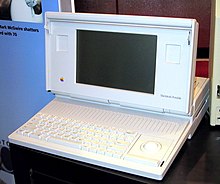I was at a data center social last week and a construction guy asked me what I do.
I have the about me page on this blog, but it doesn't really answer the question what I do, so let me try a different way to explain.
My degree is in Industrial Engineering and Operations Research. What does in IEOR focus on?
The Department of Industrial Engineering and Operations Research (IEOR) educates students to become highly skilled in:
the quantitative modeling and analysis of a broad array of systems-level decision problems concerned with economic efficiency, productivity and quality;
the collection of data and analysis of data using database and decision-support tools;
the comprehensive modeling of uncertainty;
the development and creative use of analytical and computational methods for solving these problems;
and to obtain the broader skills, background and knowledge necessary to be an effective professional in a rapidly-changing global economy.
I spent 5 years at HP working in manufacturing and logistics from 1980 - 1985. When the printer business was building up and one of the divisions I worked in was the HP division that was the distributor for printers and computer supplies.
In 1984, HP introduced both inkjet and laser printers for the desktop. Along with its scanner product line, these have later been developed into successful multifunctionproducts, the most significant being single-unit printer/scanner/copier/fax machines. The print mechanisms in HP's tremendously popular LaserJet line of laser printers depend almost entirely on Canon's components (print engines), which in turn use technology developed by Xerox. HP develops the hardware, firmware, and software that convert data into dots for the mechanism to print.
I made the switch from HP to Apple and worked on distribution and supply chain logistics, OEM peripheral procurement, and operating systems from 1985 - 1992 coinciding with rise and fall period of Apple. Working on the Mac II and System were great. Working on the Mac Portable provided some good life lessons.
1986–1993: Rise and fall
See also: Timeline of Apple II family and Timeline of Macintosh modelsHaving learned several painful lessons after introducing the bulky Macintosh Portable in 1989, Apple introduced the PowerBook in 1991. The Macintosh Portable was designed to be just as powerful as a desktop Macintosh, but weighed 7.5 kilograms (17 lb) with a 12-hour battery life. The same year, Apple introduced System 7, a major upgrade to the operating system, which added color to the interface and introduced new networking capabilities. It remained the architectural basis for Mac OSuntil 2001.
The success of the PowerBook and other products brought increasing revenue.[49] For some time, it appeared that Apple could do no wrong, introducing fresh new products and generating increasing profits in the process. The magazine MacAddict named the period between 1989 and 1991 as the "first golden age" of the Macintosh.
At Microsoft I was recruited to work on Win3.1 Far East fonts, then spent most of my time working on Windows Operating system up until Windows XP. After Windows XP, I switched to server, management tools, and evangelism. 1992 - 2006 was a long 14 years with a lot of changes. The Microsoft years can be long so I just embedded the three time periods below.
In 2006 I took a year off, then started working on data centers with Mike Manos at first, then Olivier Sanche.
I don't think I answered the question from the construction guy on what I do, but you have a better idea of what I did in my past.

